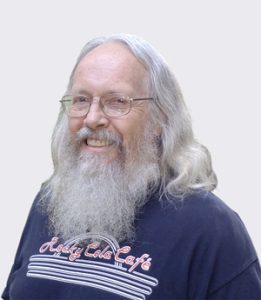CV’s First Inhabitants – What Happened to the
Wiqangna Village Site

president of the Historical Society
of the Crescenta Valley and loves local history. Reach him at
lawlerdad@yahoo.com.
To wrap up our series on the Native Americans who lived in our valley for perhaps thousands of years before we arrived, let’s examine what has happened to the village site. As written before, we are assuming the village was located at the far western side of the Crescenta Valley, at the mouth of Las Barras Canyon, right where the Verdugo Golf Course (now closed) sits.
Village artifacts for Hahamongna have been found in the Arroyo Seco and several artifact sites have been located for the village of Tujungna in Big Tujunga Canyon. But nothing of record has ever been located for Wiqangna. It could be because we are wrong about the village being located there or it could be because that site has been so disturbed over the years. Let’s look at how the supposed site of Wiqangna has been used.
In 1882, the Begue family bought the land along the Verdugo Mountains on the eastern side of the Crescenta Valley, including Las Barras Canyon. Phil Begue remembers that when they first arrived at their new purchase, “a band of Indians” was camped in Las Barras Canyon. Already on that land were the remains of an old well and ruins of an adobe structure. The Begue family built a stone house there, but by the turn of the century the land was sold to Charleston Dow.
In 1933, the land there was leased by the U.S. government for the establishment of a Civilian Conservation Corps camp, and a portion was leveled by bulldozers for the CCC camp. This is the area that is today the driving range of the defunct golf course. Perhaps this was when any trace of the village was bulldozed away. If artifacts were found during that development, nothing was ever recorded. The camp, called La Tuna CCC Camp, was the base of operation for hundreds of young men through the late ’30s who performed firefighting and flood control work.
In 1941, the La Tuna Camp was fenced and Japanese, German and Italian nationals were interned there during WWII. Later in the war, the camp closed and was reopened in the late ’40s as a juvenile detention camp, which it remained through the ’50s. The only physical change to the land during that period was the construction of a swimming pool on the northern portion of the camp’s footprint.
In 1959, a group of doctors bought the entire parcel, including the camp and the canyon above it, for development as a golf course. Once again bulldozers moved in, leveled the barracks of the camp, and proceeded up the hillsides, cutting and filling the many terraces that made up the various holes of the golf course. Once again, no mention has been made of any artifacts being found. Even if some were discovered, it’s unlikely that there would have been any mention of it. This was before there were any laws in place respecting the existence or even acknowledgement of archeological sites. Sadly, I think if there were any remnants of the village or human burials, they would have been scraped away and buried during this massive earthmoving job.
Today the golf course and the possible site of Wiqangna has been purchased by a developer proposing to build 200-plus homes on the site. The final EIR (Environmental Impact Report) on the project is out, and it notes the possibility of finding artifacts, although it also notes that, given the extensive grading done during golf course construction, the possibility is low. Nonetheless, the EIR states that following state law an “archeological observer” would be on-site full-time during grading. Modern tribal representatives have requested that a Native American observer be stationed at the job-site, but that is still being negotiated.
Who knows? Perhaps some tidbit from the village of Wiqangna will be unearthed if this housing development moves forward. This site in our valley has a human history, perhaps thousands of years in length, with its attendant human drama of love, family, religion and politics. So many fascinating stories unrecorded. We can only imagine.
